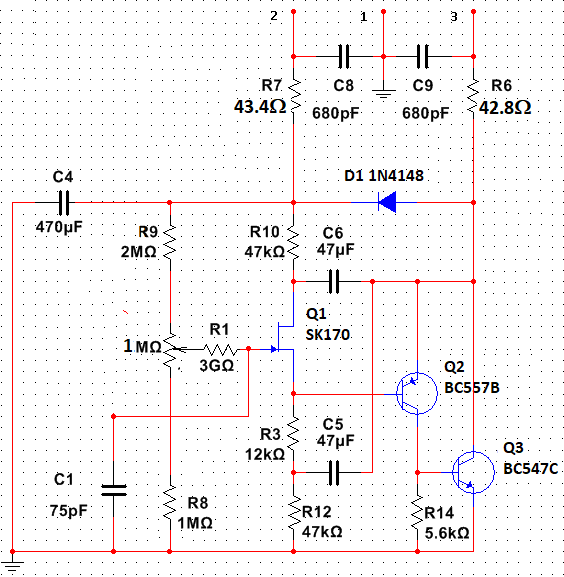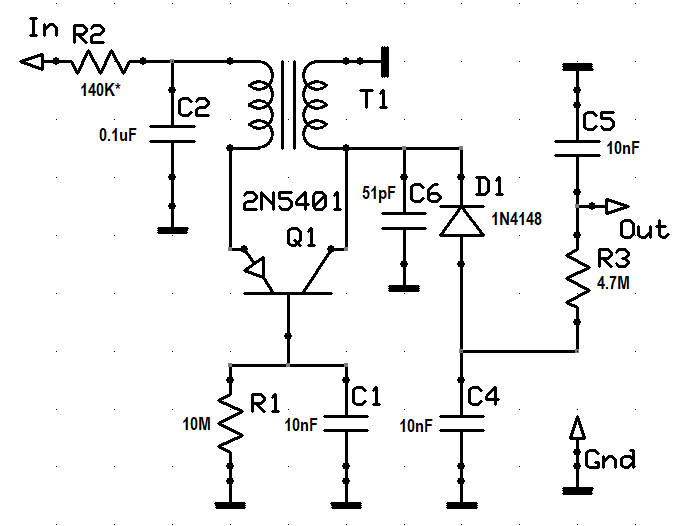I have got discovered vintage AKG CK12 Brass capsule at home.
I would like to build a mic with this capsule and use a standard one-transistor Jfet circuit of ECM electret mics (common source either
source follower)...
Has anyone ever tried to wire such a large capsule with a single Jfet transistor ? Do you think this might work as a decent condenser mic ?
Thank you for the comments!
Topic Tags
Comments
Thanks! Correct, I do not need/expect the output of the typical
Thanks! Correct, I do not need/expect the output of the typical LDC mics - 10+mV. I have a great mic preamp with 1mV input sensitivity, so that is what I want to get from the AKG capsule and transistor, then the signal goes to the preamp ....
Actually, there are few basic specs which describe the characteristics of the mic, these are Frequency Range, SNR, THD, SPL etc. If those are OK then the mic is OK too.
I do use great little electret mics by Oktava, and those little mics are a combination of two parts - membrane and transistor....
I have got most of the mic parts, the housing/mounting parts are all DIY, awaiting for 1-10G resistors...
LTSpice simulator runs this simple circuit fine, hope to have it completed soon.
I just wanted to hear of a similar experience prior to starting with building this AKG.
Signal-to-noise ratio of a microphone is a property of the micro
Signal-to-noise ratio of a microphone is a property of the microphone and is independent of the pre-amplifier you feed it into.
In a capacitor (condenser) microphone, the output noise is determined by the Johnson noise of the equivalent output resistance, the noise of the high-voltage bias supply to the plate (not in electrets) and the noise generated in the impedance-converter at the output.
It doesn't look as though you are going about the task of building the microphone in the way that I would approach it, but each to his own. I'm sure you will learn a lot from the project.
Boswell, post: 466513, member: 29034 wrote: Signal-to-noise rat
Boswell, post: 466513, member: 29034 wrote:
Signal-to-noise ratio of a microphone is a property of the microphone and is independent of the pre-amplifier you feed it into.
I'm sure you will learn a lot from the project.
I have no concerns for my preamp, and I would not have any related to the capsule itself.....
I was just told that these CK12 capsules does not need frequency correction, so they should work fine being wired with 1-2 transistors....
Well, if something goes out of expectations, then I would go for the next simple version by Oktava:
http://russelltechn…
Greetings! Yesterday, my…
Greetings!
Yesterday, my microphone project was completed, got it assembled after some basic tests, it took me one year of searching, purchasing parts, designing etc....
More detailed results can be found on Vegalab (Russian forum) where I started the initial project, this is the link to the latest updates!
The final stage of the project in brief......
The FIN schematic given above is designed by Russian guy Paul, no significant changes were done, just using different transistors and incorporating a choke oscillator (Meisner/Armstrong Oscillator) on to the mic's PCB, 60V polarization voltage is what you should consider with such an older model condenser capsules.
So the following are the basic specs of the real mic which was just assembled yesterday. I have to note on to the nearly 100% similarity matches of the real mic's characteristics with its simulation in LTSpice software (just 2-3% of mismatch!), this is almost universal and unique software you must have, use and trust.
1) CK12 capsule: 84pF/80pF capacitances of membranes (standard is 72-86pF)
2) Self-Noise: Cardioid 1.388µV (single membrane), Omni 765.98nV (both membranes), LTSpice simulated 1.332µV/704.13nV
3) THD: 0.000018% based on LTspice, will be measured later
The final schematics of the mic and choke oscillator:


The microphone:
Good luck with your mic projects! Merry Christmas and a very Happy 2022 Year!


You have to choose your type of JFET carefully. The easily-avail
You have to choose your type of JFET carefully. The easily-available low-leakage ones are not usually low enough noise to make a good impedance converter. At least you won't need much gain with a high-output capsule, so a simple common-drain follower would show whether a particular type of JFET was going to give adequate performance. This forum thread may help: https://www.diyaudi…
Keep us posted about how you get on.